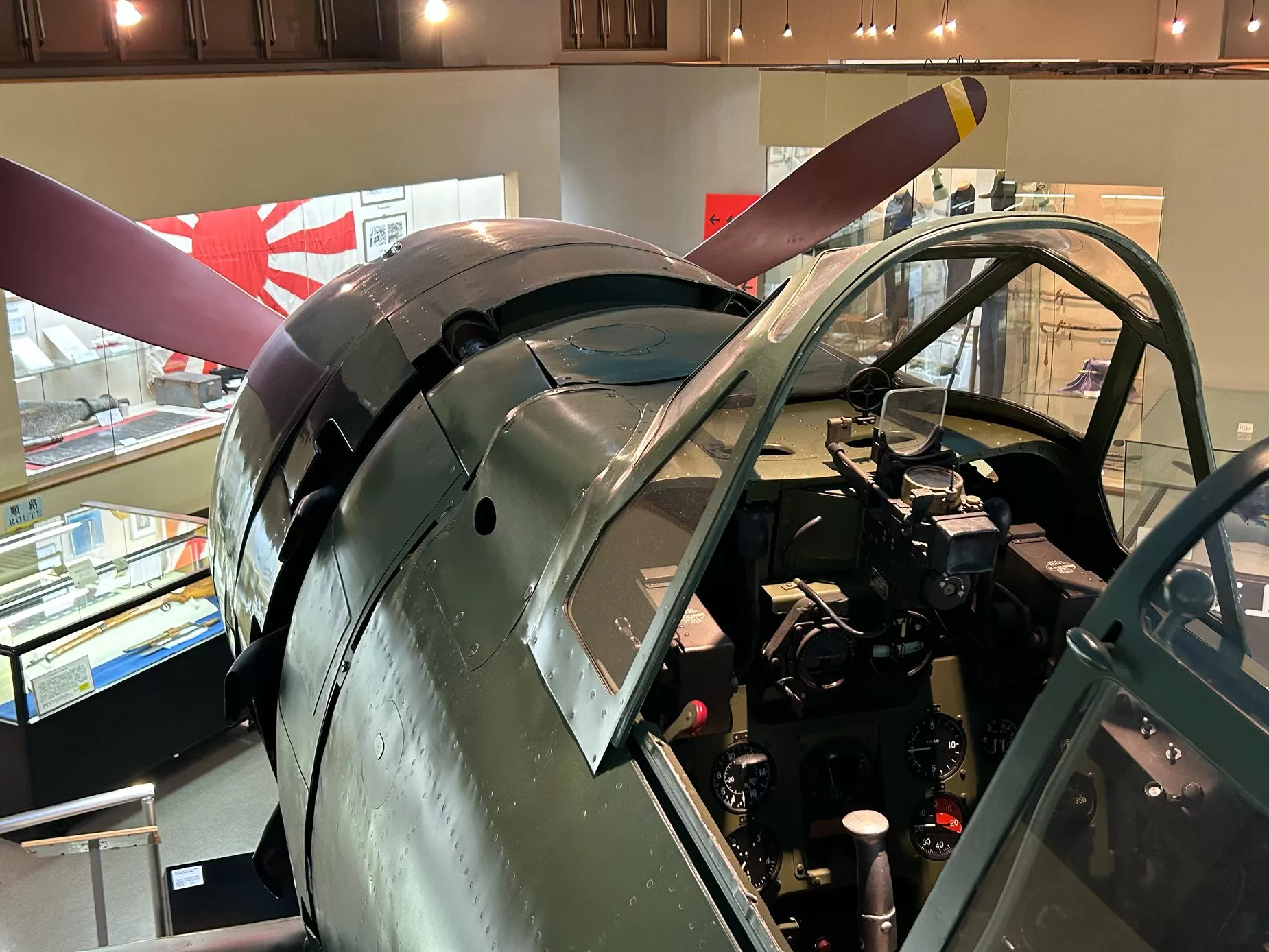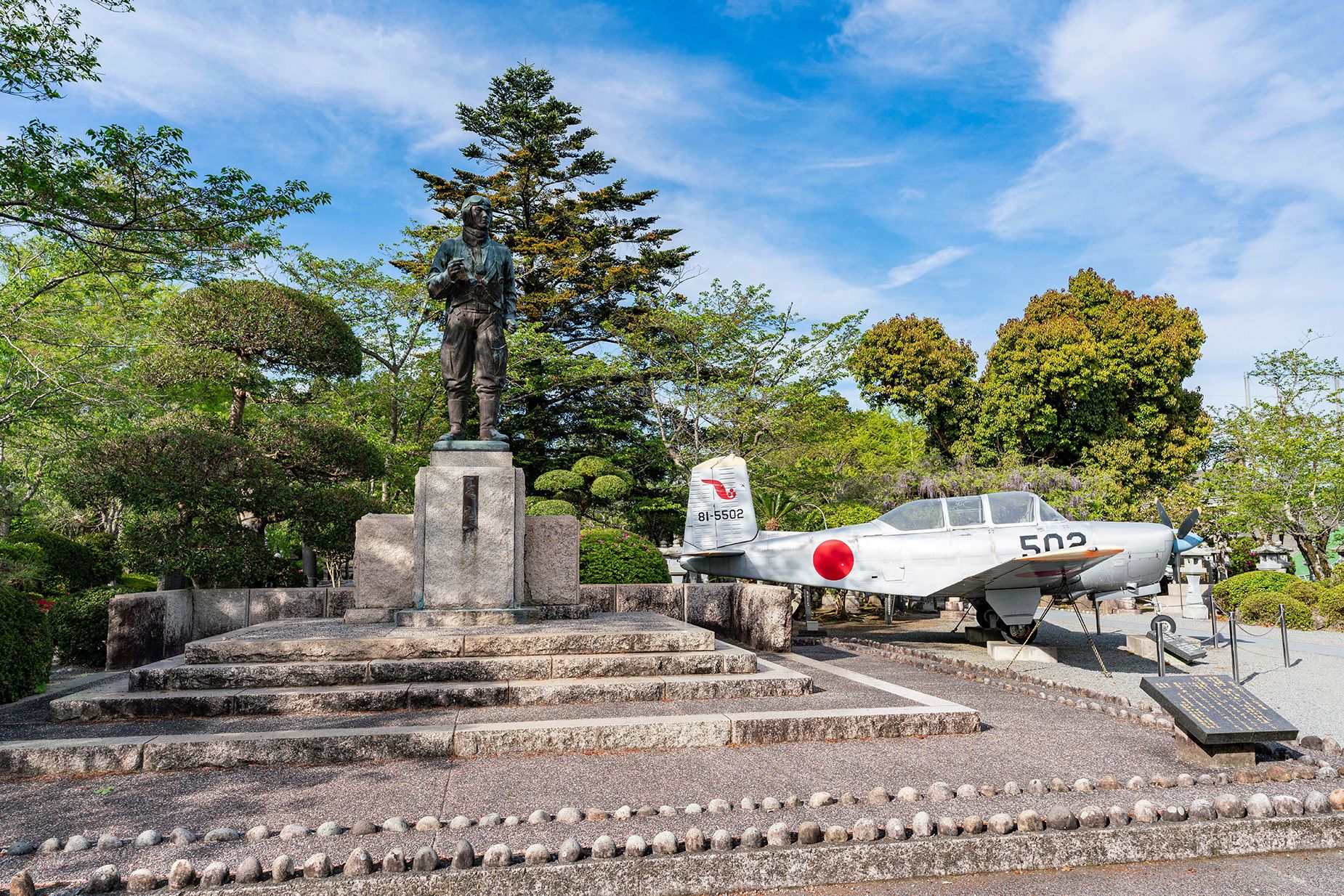
When one imagines a kamikaze pilot, one most often pictures a screaming pilot taking a fatal drop while wearing goggles. Or maybe there would be no face at all, just a fighter jet slamming into a cruiser.
Most likely, it’s not a youngster sobbing with his bedsheets drawn up over his head in a musty, partially subterranean bunker.
And most definitely not a group of happy high school students cuddling a dog a few hours before they were supposed to burn to ashes while sinking a US aircraft carrier.
However, the walls of the Chiran Peace Museum and the Kanoya Air Base Museum, both situated on the island of Kyushu in Japan, display some of the actual faces of the kamikaze.
They number in the hundreds.
Their final words, frequently written in letters to their moms, are seen in many of the pictures. They apologize for their youthful transgressions and promise to make their mothers proud.
At age sixteen, Yasuo Tanaka was the youngest kamikaze pilot ever. He piloted an Okha, which was a bomb dropped from a mother aircraft that had wings but no wheels. May 11, 1945, was his death date. His picture is on display at the Kanoya Museum, which is located on the grounds of a base used by the Japan Maritime Self-Defense Force.
Although the last letter sent by the youngster is not in the museum’s possession, previous young kamikaze letters demonstrate youthful arrogance.
In vivid brushstrokes, 18-year-old second lieutenant Torao Kato penned in Japanese, “Dearest mother, please live a long life full of vigor.” I’ll attempt to take down a large one.
Army Lt. Col. Yoshio Itsui, a unit commander who oversaw the first aircraft out of the Chiran air station on April 1, 1945, was the oldest kamikaze, at age 32.
Itsui departed with his spouse and three young offspring, one of whom was a baby boy. Itsui’s final letter to the infant is included in the book “The Mind of the Kamikaze,” which is available for viewing at the Chiran Museum.
“Work hard and please grow up to be an excellent Japanese man and son of the Emperor,” Itsui wrote.
The book said that his kid would never read the letter. After learning of the pilot’s passing, the boy’s mother was unable to continue nursing him, and four months later he passed away from starvation.
An approximately thirty-person audience gathered for a lecture on the history of the kamikaze, is moved to tears by tales like Itsui’s on a beautiful October morning in the Chiran museum theatre. The images on the screen combined with the feelings of everyone else in the theatre are enough to make even a non-Japanese speaker’s eyes wet.
One of the presentation’s images features a child kamikaze cuddling a dog; many people believe this is the most stunning depiction of a suicide unit ever created.
The fliers, who were all between the ages of 17 and 19, were known as “Young Boy Pilots,” young people who enrolled in the Air Force Training Corps at the age of 14, before the creation of the kamikaze groups.
“The Mind of the Kamikaze” states that “it is highly probable that they were unaware that they would become kamikaze pilots.”
The book states that “they felt it would be worth dying for their country and for their parents,” but that “once they knew their fate they did not hesitate to accept their duty.”
Among the 335 Young Boy Pilots who devoted their lives as kamikazes on May 27, 1945, were the five young people in the dog picture.
One of the images adorning the walls of the Chiran Museum features Capt. Masaji Takano, an American.
The book in the exhibit states that he was born in Hawaii, married a Japanese lady, attended college in Japan, and was recruited into the kamikaze forces.
A depiction of a dive plane with the lines, “I will surely send an enemy warship to the bottom,” is included in his final message.
According to the book, Takano had three brothers: two served in Europe with the US Army, and one fought for Japan.
Camikaze, the most deadly enemy of the US Navy, is a combination of two Japanese words: kami, which means “divine,” and kaze, which means “wind.” When a massive storm destroyed a Mongol invasion force that was sailing towards an inadequately fortified Japan in 1281, sparing the Japanese people from a potentially catastrophic battle, the phrase entered common usage.
The World War II kamikaze pilots from Japan are sometimes referred to as “tokko,” or “special attack” pilots. As the Pacific tidal battle swung against Japanese troops in 1944, Adm. Takijiro Onishi employed the strategy of bomb-laden planes slamming into US warships as a last-ditch effort to shield the Japanese homeland from a US invasion fleet, according to US military documents.
The numbers supplied by the museum indicate that 1,036 youths and men who served in the army lost their lives on kamikaze missions.
1,584 more people who were pilots for naval forces lost their lives in combat. They completed more than 1,730 combat missions between the two branches. And they brutally destroyed the US Navy.
The US Naval History and Heritage Command deem the Battle of Okinawa, fought from April 1 to June 22, 1945, the bloodiest ever for the US Navy.
According to the US Defence Department, 26 US ships were sunk and 168 were damaged by kamikaze assaults off Okinawa, accounting for almost 40% of the 12,000 US servicemen who lost their lives in the conflict.
By 1945, US troops were all too aware that they were up against vicious suicide missions from the Imperial Japanese forces, who mercilessly abused the people they had captured throughout East and Southeast Asia because of their extreme militarism and loyalty to their Emperor.
One of the most notorious mass suicide attacks was on the Pacific island of Saipan a year prior. Almost 4,000 Japanese soldiers launched a suicidal onslaught against a stronger American force, knowing full well that a military victory was unattainable.

“They were following the last orders of their commander, Lieutenant General Yoshisugu Saito, who had called for this all-out surprise attack in the honor of the Emperor before committing ritual suicide,” according to a 2016 internet article from the Atomic Heritage Foundation.
Similar suicide charges occurred throughout the Okinawa ground combat, however, one Japanese witness recalls the conditions that gave rise to that mindset.
“Everyone was prepared for death back then when 100 million Japanese citizens were supposed to be ready to fight to the death,” survivor Kinjo Shigeaki is cited as stating. The ideology of complete submission to the emperor placed a strong emphasis on death and minimized life. An entirely new sense of identity emerged from the desire to die on a remote island for the Emperor.
Many of the base’s fliers spent their last night at the Tomiya Inn in Chiran, where owner Tome Torihama developed into a close personal friend. Some trusted her to deliver their final thoughts to their family, uncensored by the military.
A little drive from the Peace Museum in Chiran town, her family has saved part of those letters together with other artifacts in a separate small museum that is worth visiting to gain more insight into the samurai worldview.
Firstly, though, you should visit Kenta Torihama’s restaurant, which his great-grandson manages currently and is located close to the main museum. He gladly shares stories about the kamikaze and his great-grandmother with guests.
He tells them that the tales of the kamikaze and his grandmother must be preserved.
However, he wishes there were more international visitors, claiming that only approximately 5% of those passing through are not from outside of Japan and that even fewer are from other Asian nations.
He claims that whereas foreigners see kamikazes as foes, Japanese people see them as defenders.
But according to him, the final letters from the kamikaze are full of lessons, particularly ones that highlight the sorrow and foolishness of war.
“Today’s world would be a more peaceful place if we could all learn from that,” he claims. Towards the southern tip of Kyushu island, close to Kagoshima, are the museums of Kanoya and Chiran.
There were World War II airfields from which the kamikaze flew, enabling the aircraft to reach Okinawa as fast as possible while using the least amount of fuel. Additionally, Japanese bases in Taiwan and the Philippines were the source of kamikaze strikes.
It is also appropriate, though, since Kagoshima is regarded as the pinnacle of the Japanese samurai warrior class.
Legendary warrior Saigo Takamori died on Shiroyama Mountain in Kagoshima in September 1877, bringing an end to the samurai’s Satsuma Rebellion against the imperial authority.
The Saigo-led force of approximately 400 men, though it held the heights, was defeated by an imperial army over a thousand times stronger.
Another good option to spend a few hours in the neighborhood for history buffs is to see the location of the samurai’s last stand.
Situated on two distinct peninsulas on the southern Japanese island of Kyushu are the Chiran and Kanoya museums. The easiest way to go there both is via vehicle, which you can rent with ease in Kagoshima, which is located on the western of the two peninsulas.
Although there is a small commercial airport in Kagoshima, it would be more convenient to fly into Fukuoka’s bigger international airport and take the 90-minute bullet train to Kagoshima.
